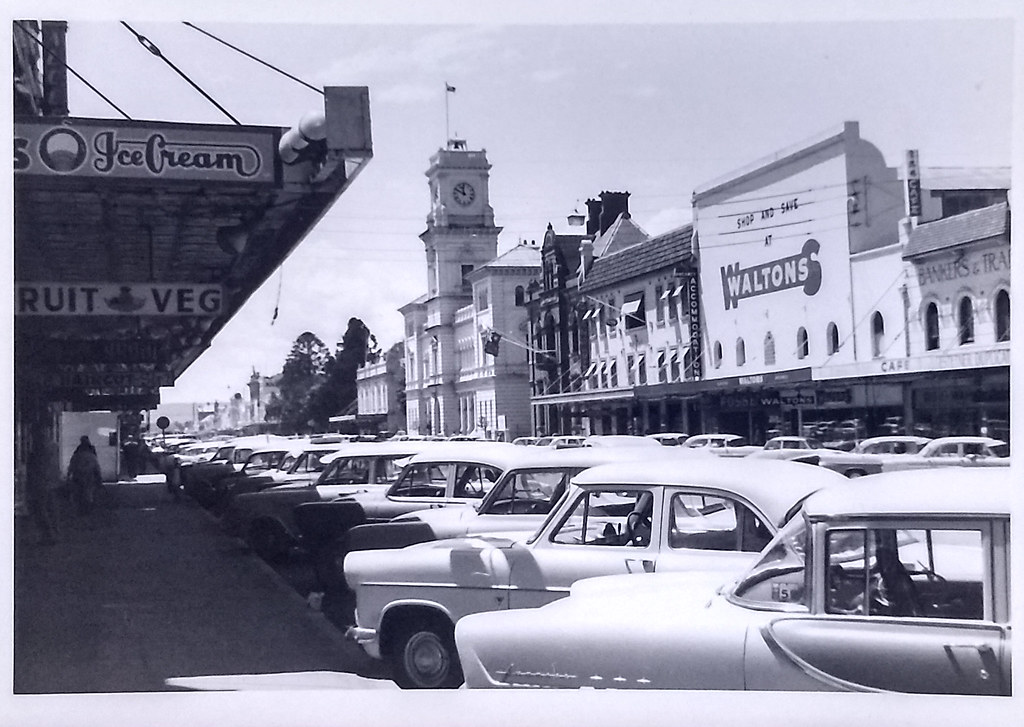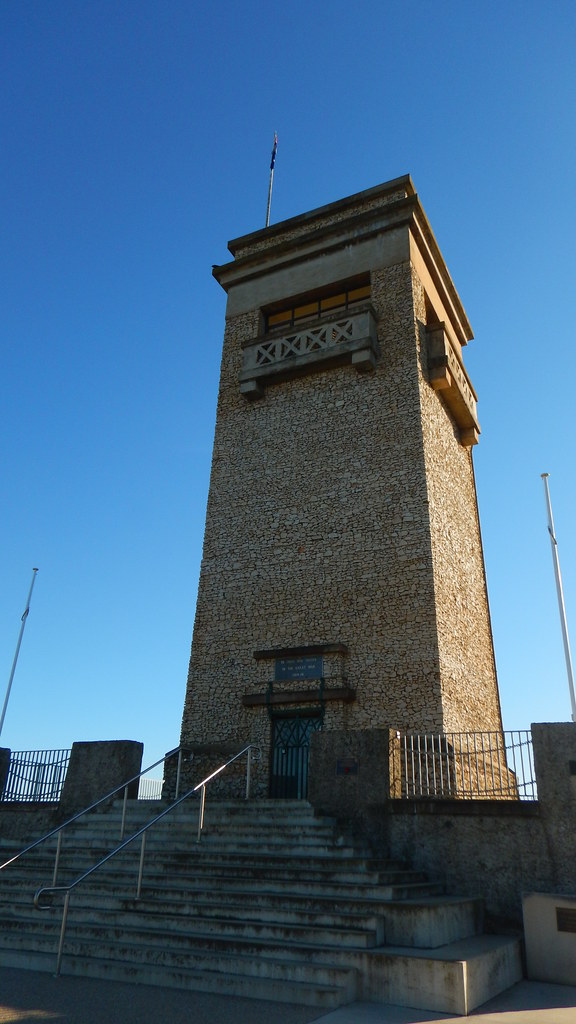Goulburn was gazetted in 1833 as a garrison town with two main purposes: to guard the convicts in the stockade at nearby Towrang and to act as a centre for police action against bushrangers in the southern region of the state. By 1836 the town of Goulburn had 'a courthouse of slabs covered with bark, a lock-up house, a few huts occupied by the mounted police and constables, a cottage of roughly cut timber and a small inn affording tolerable accommodation'.
From the early days, the township was noted for its wheat, wool and stock breeding. By the 1860s wheat-growing had moved further west but Goulburn's reputation for wool and livestock continued to expand with the city's wool sales remaining as the only such sales still held at a venue outside the state capital cities.
 |
| Auburn St (aka Hume Highway) Goulburn c.1960 (Fred Rasmussen) |
In 1864 the Anglican See of Goulburn was created and Goulburn became the last town in the British Empire to be created a city by Royal Letters Patent. There followed the boom years in its development. As the southern terminus of the rail line from Sydney, Goulburn acted as a staging centre for the transfer of goods and passengers further south or west. Many of the best-known buildings in Goulburn were built between the 1860s and the 1880s.
 |
| Main street Goulburn for 1913 8 Hour demonstration. (ANU Collection) |
The Great Depression of the 1920s and 1930s had a strong impact on Goulburn and since the Second World War growth in Goulburn has been slower than in most other Australian cities. It remains the centre of a strong pastoral district and has retained a rich architectural heritage from the nineteenth century including two cathedrals, the old jail and courthouse and many fine homesteads.
RIVERSDALE
 |
| Riversdale (c) Jonathan Miller / National Trust |
Built in the 1830s as an inn by John Richards, transported thief turned coach operator and landowner, Riversdale has been restored and furnished by the National Trust. The colonial Georgian house is built with handmade stock bricks and the stone barn is of a much earlier period.
ST SAVIOUR'S CATHEDRAL
Design by Edmund Blackett in 1874, the Cathedral was dedicated in 1884 St Saviour's is one of two cathedrals in Goulburn and one of the most magnificent white sandstone cathedrals in Australia.
GOULBURN BREWERY (closed at time of posting)
 |
| War Memorial 2020 (R Eime) |
Bradley's Goulburn Brewery was built in 1835 and operated as a brewery under a number of different owners until it was closed in 1929 by the then owner, Tooth. Restoration work on the brewery began in 1982 and the brewery is now the only surviving pre-Federation brewery.
ROCKY HILL WAR MEMORIAL
Built by public subscription in 1923 to commemorate the men from the Goulburn district who served in the First World War, the War Memorial - on a craggy rise on the city's eastern outskirts is one of Goulburn major landmarks and is lit up at night. Standing twenty metres high it has a rotating beacon on the top and a viewing platform from which there are spectacular views of the city. The fifteen-metre square houses a military museum.
FESTIVALS
Lilac City Festival, early October
ACCOMMODATION (updated 2020)
 |
| Brand new Quest apartments (supplied) |
 |
| MORE: History on the Hume series |
 |
| Text source: Readers Digest Guide to Australian Places 1995 |





